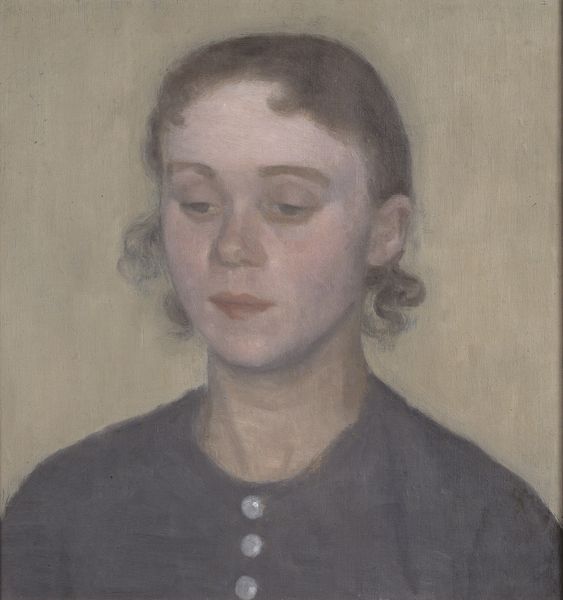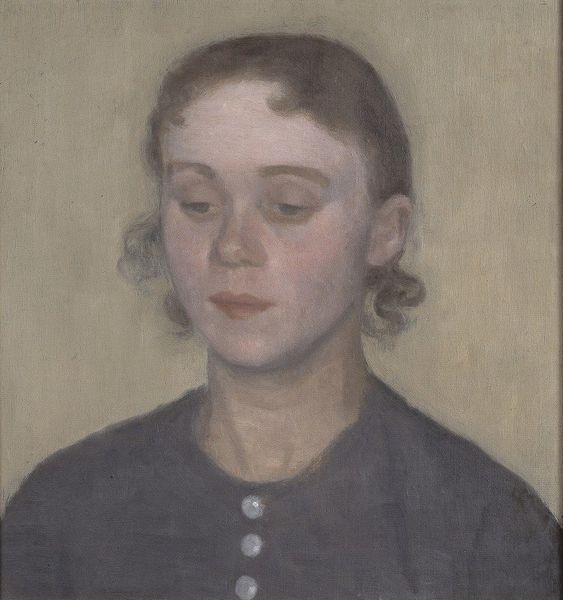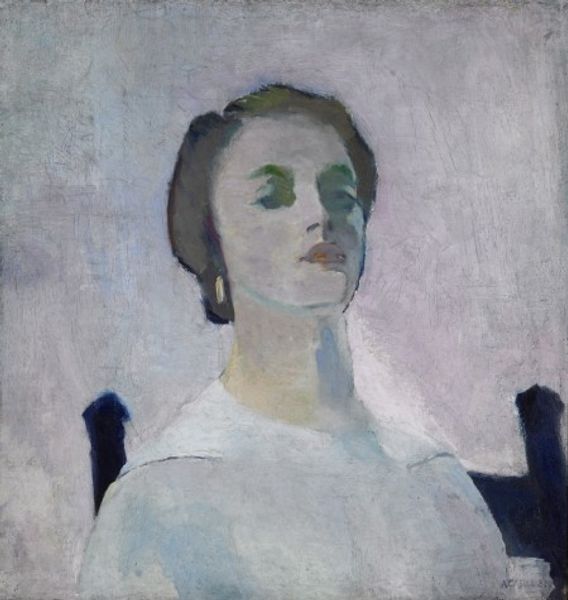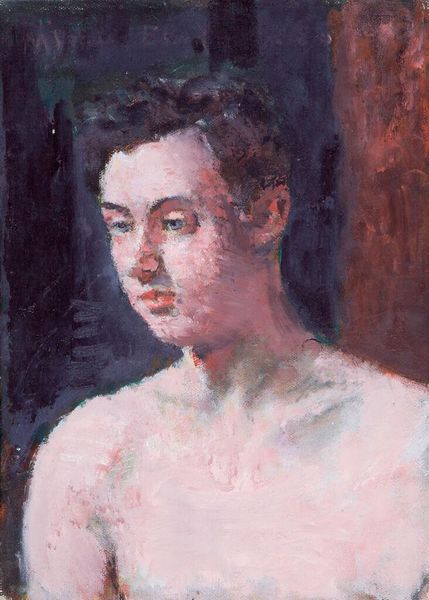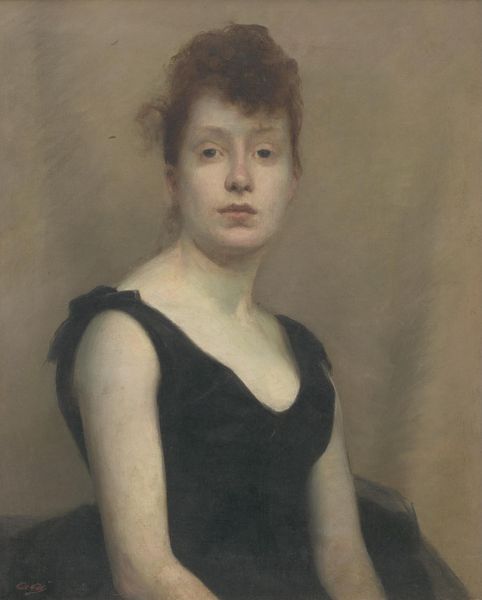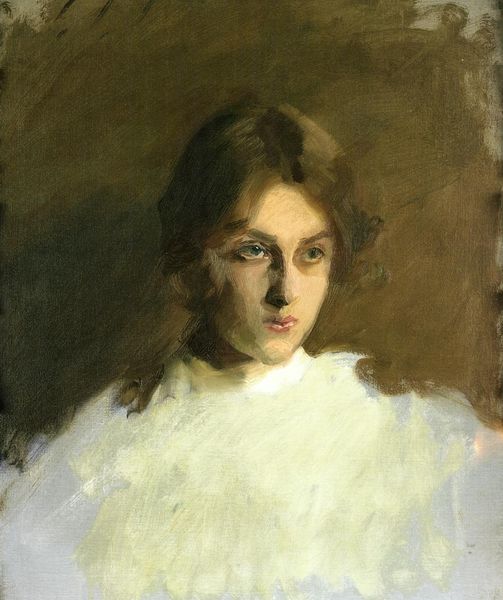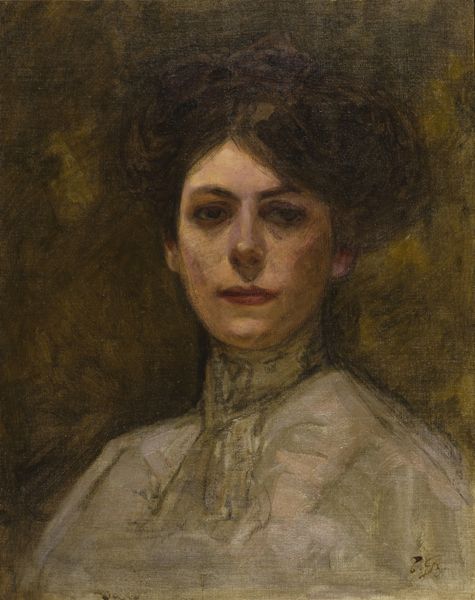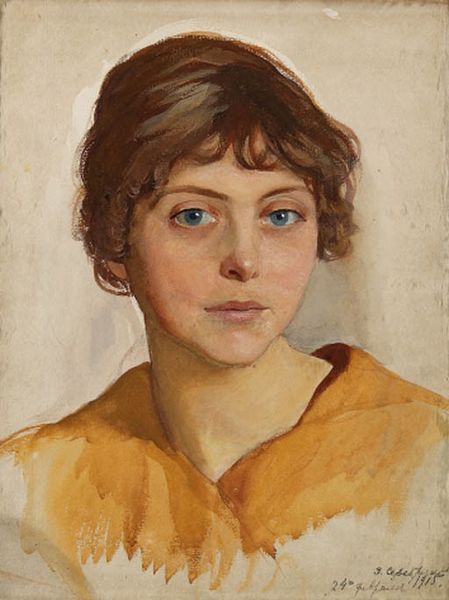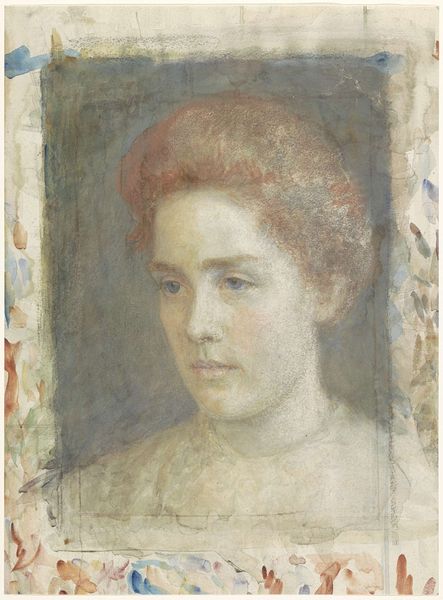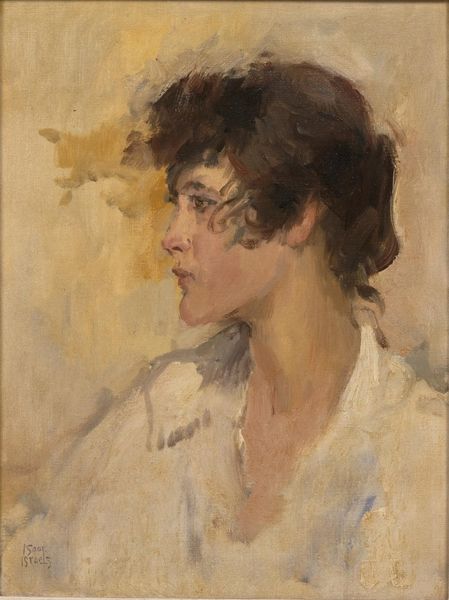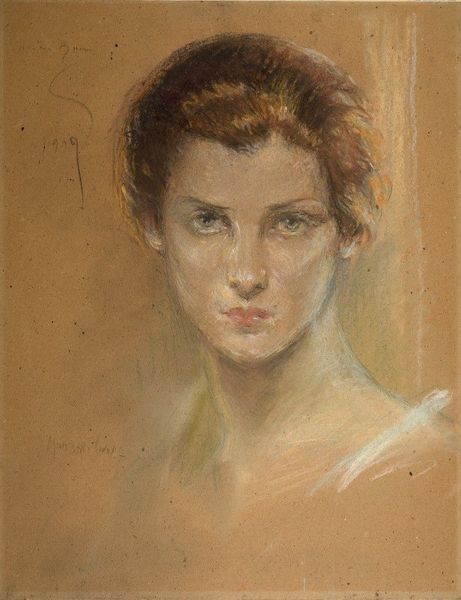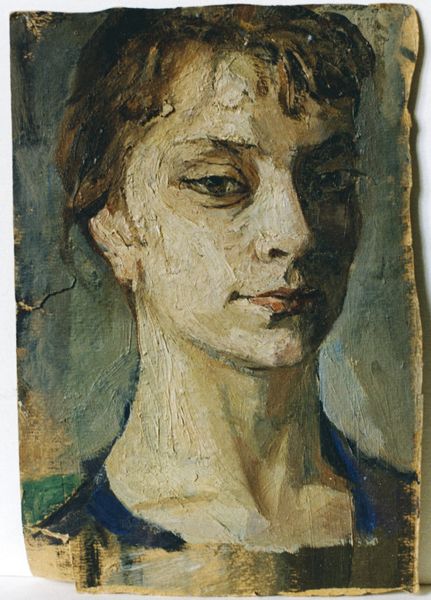
Copyright: Public domain
Curator: This is Julian Ashton's "Study of Alice Muskett," an oil on canvas painted in 1893. It's an example of the artist's engagement with Impressionistic portraiture during his time in Australia. Editor: My immediate impression is one of studied observation, but it doesn’t feel entirely resolved. There’s a tension, a sort of delicate vulnerability captured in the way the light falls, especially around her eyes, one obscured by the monocle. Curator: The monocle immediately signals a specific socio-economic position, doesn’t it? And I think Ashton is carefully positioning Muskett, not just as an individual but as a representative of educated, middle-class womanhood at the turn of the century. The choice of attire reinforces this reading—that almost utilitarian formality suggests a context where function trumps fashion. Editor: Interesting point. Formally speaking, the restrained palette and relatively loose brushstrokes suggest Impressionistic influence, but there's an undeniable academic structure underpinning the composition. Look at how the lines of the collar subtly frame her face. The artist has distributed a tight focal point to direct our gaze. Curator: Exactly, Ashton was committed to making art accessible and relevant. But do you think this piece challenges conventions about female representation or merely reinforces the social roles women had to fulfill during that time? Her gender would likely situate her in a field that required this sort of precision and control. Editor: That's where the composition becomes fascinating. The asymmetry introduced by the monocle destabilizes a more traditional reading. Is it an intentional disruption? Does it allow us to interpret a slightly subversive identity here? Curator: Perhaps! A disruption, too, of our gaze, demanding we notice both the seeing and the seen. What do you think Ashton attempts to achieve with this play of visibility, through the very gendered gaze he yields as the artist? Editor: The monocle's very gleam makes this picture far more potent than Ashton possibly imagines. The composition’s gentle light brings such stark material objects into new clarity, offering a way to see these details of everyday gender performance. Curator: Thank you, that shifts my understanding considerably! I will look differently at this picture after our dialogue. Editor: Absolutely! Analyzing such details changes one’s view. And it shows us there's always more to unpack in works of art.
Comments
No comments
Be the first to comment and join the conversation on the ultimate creative platform.

